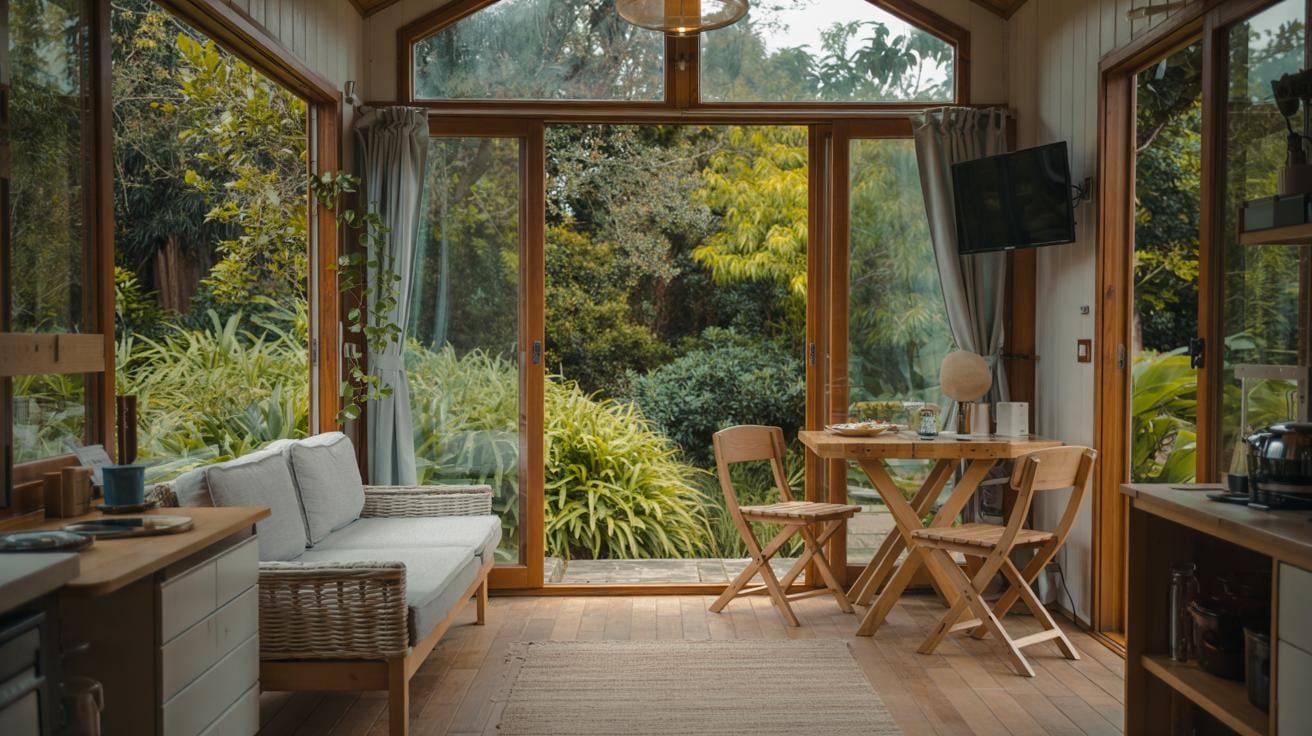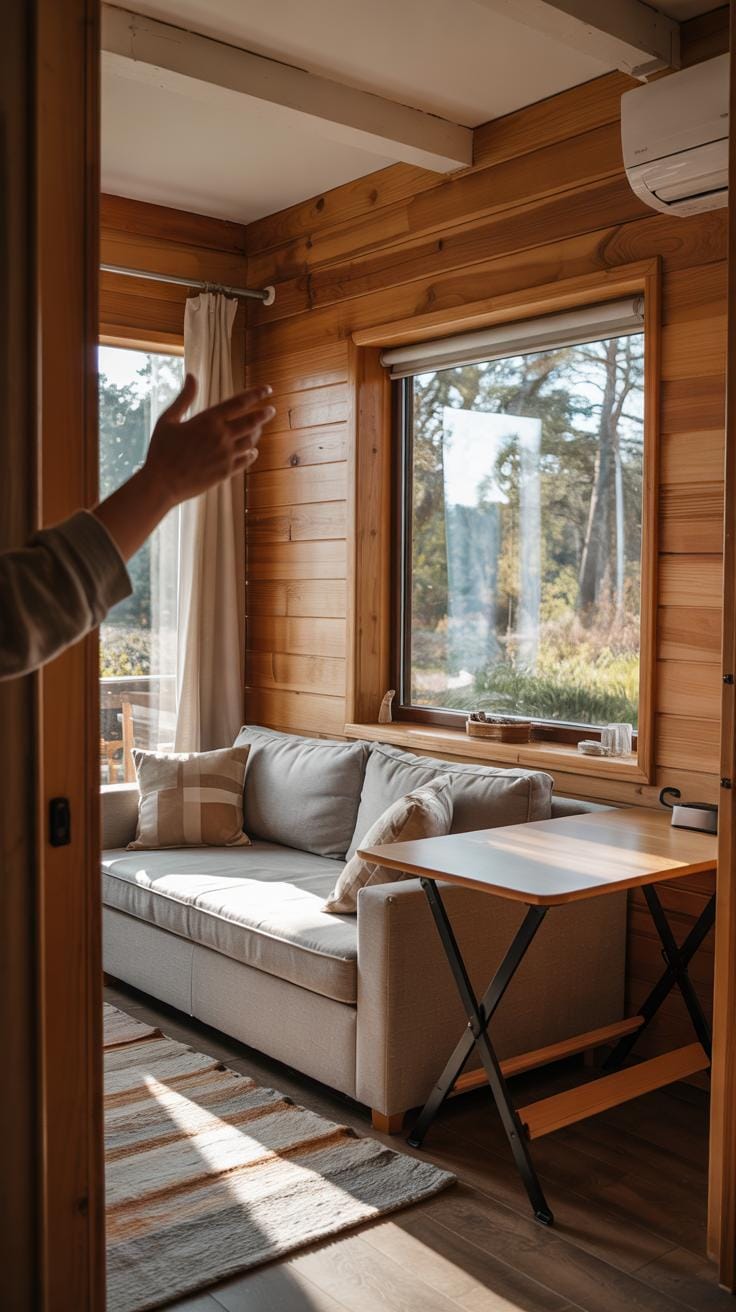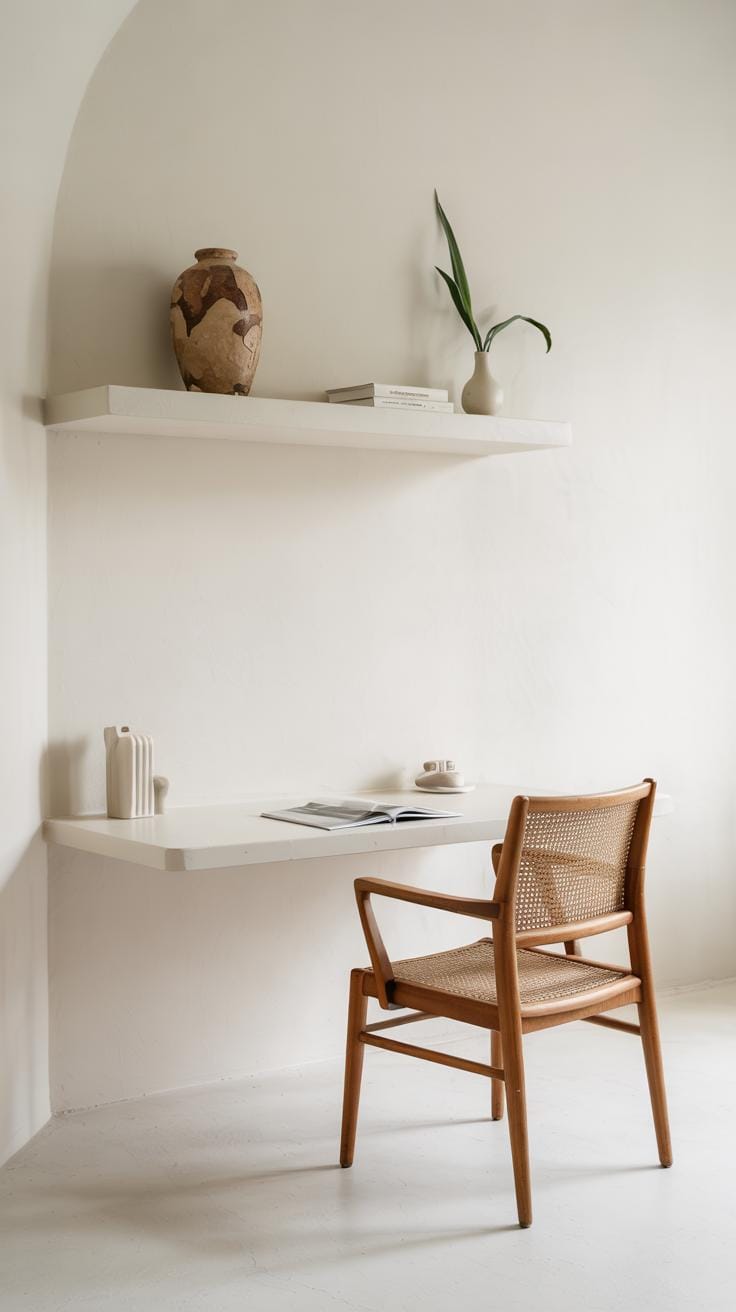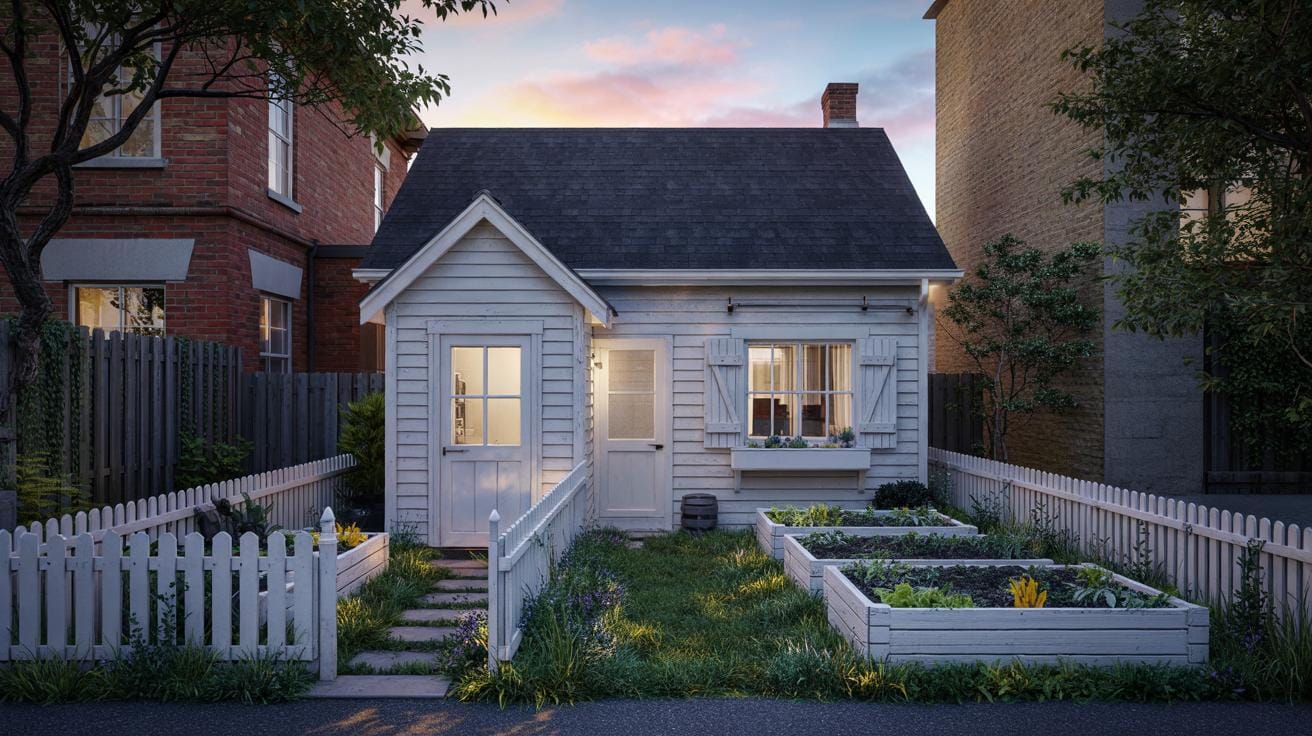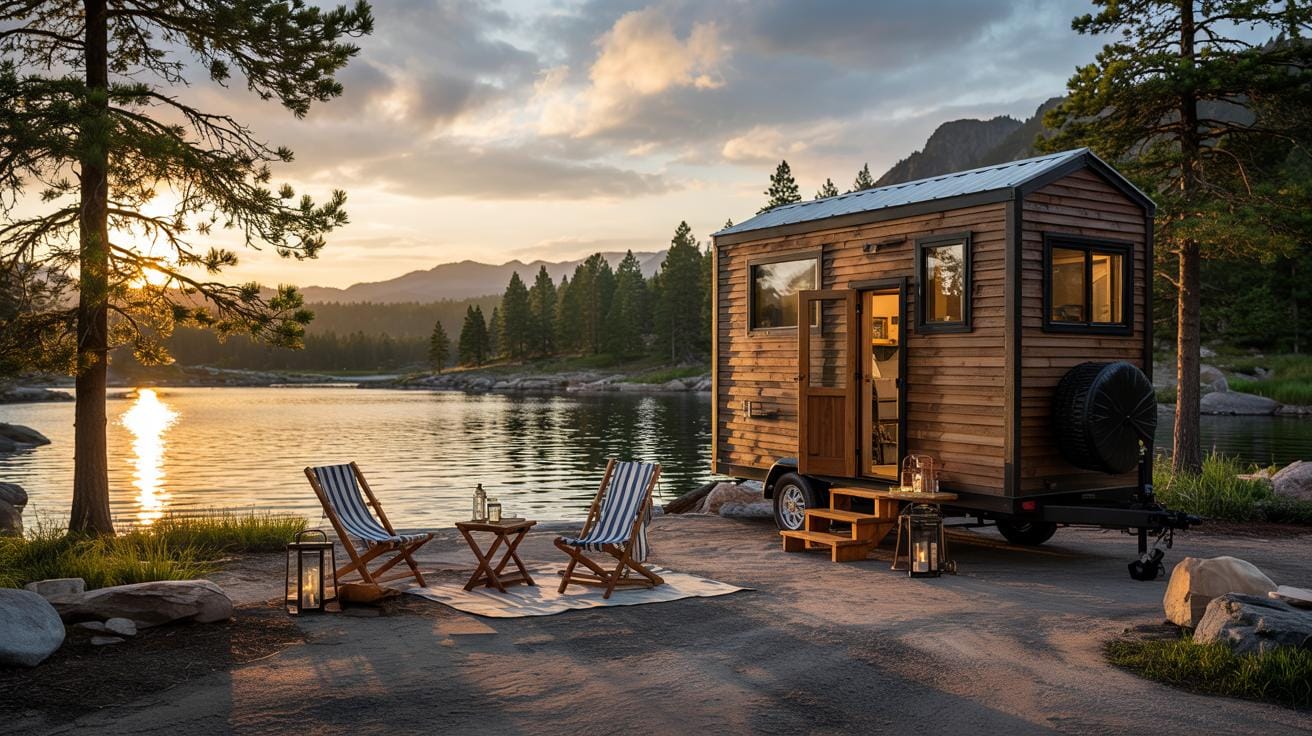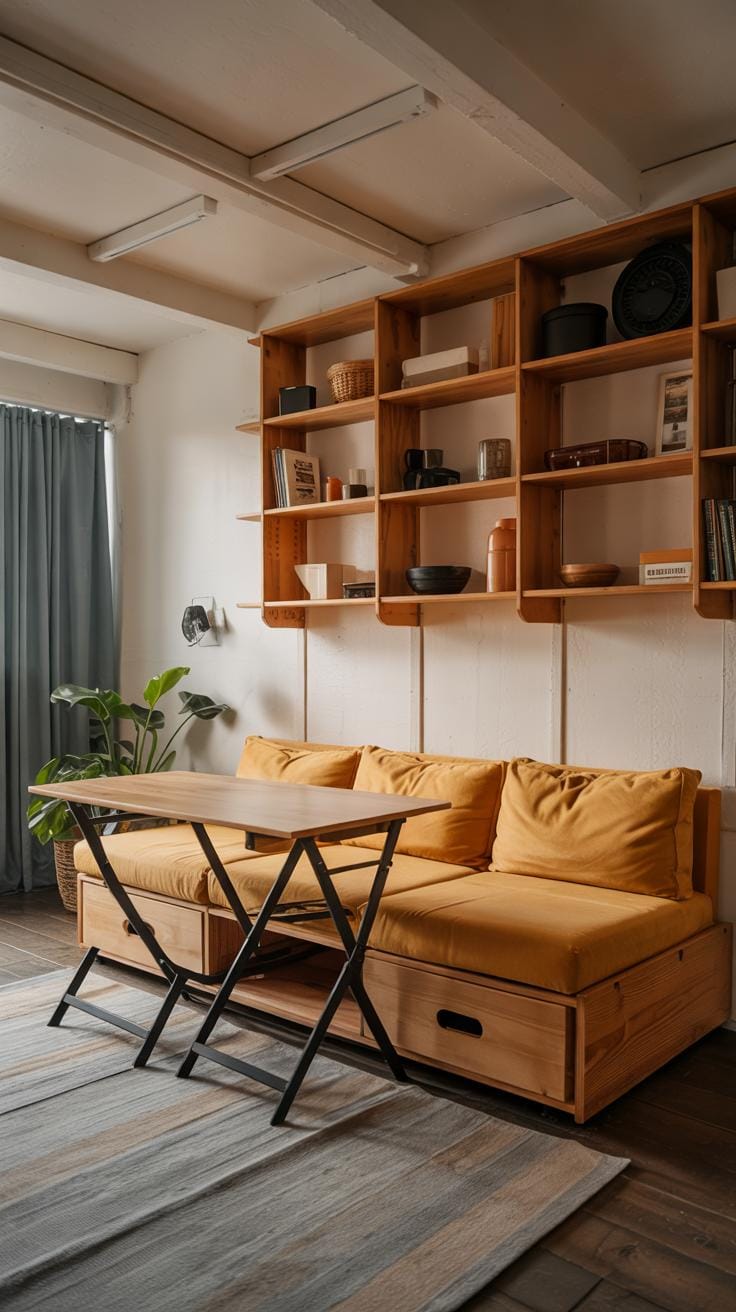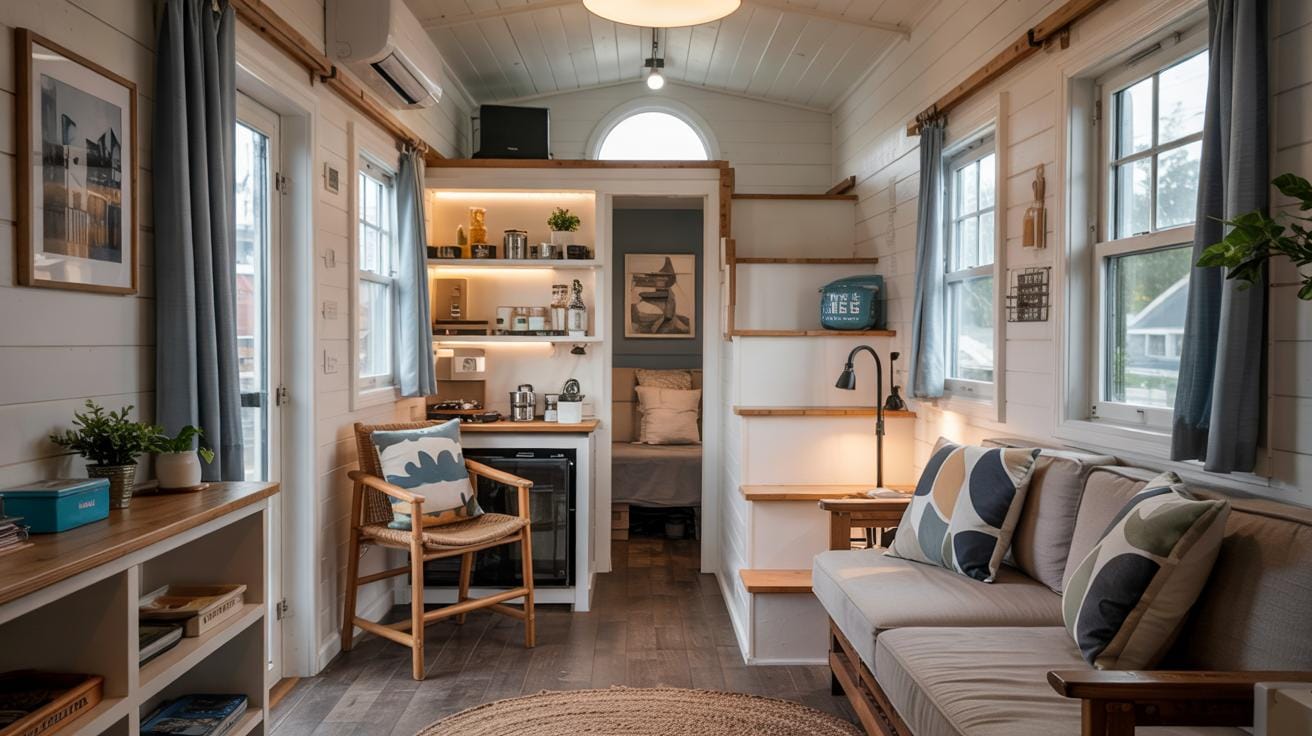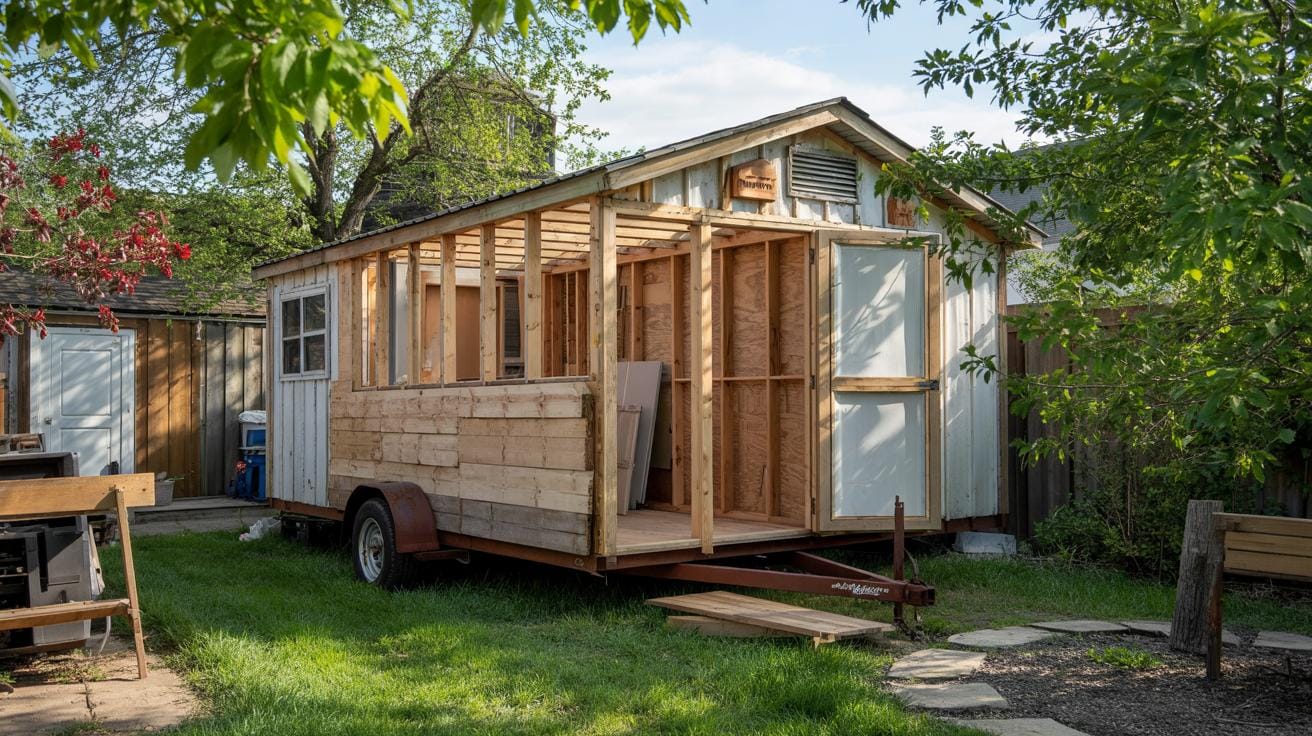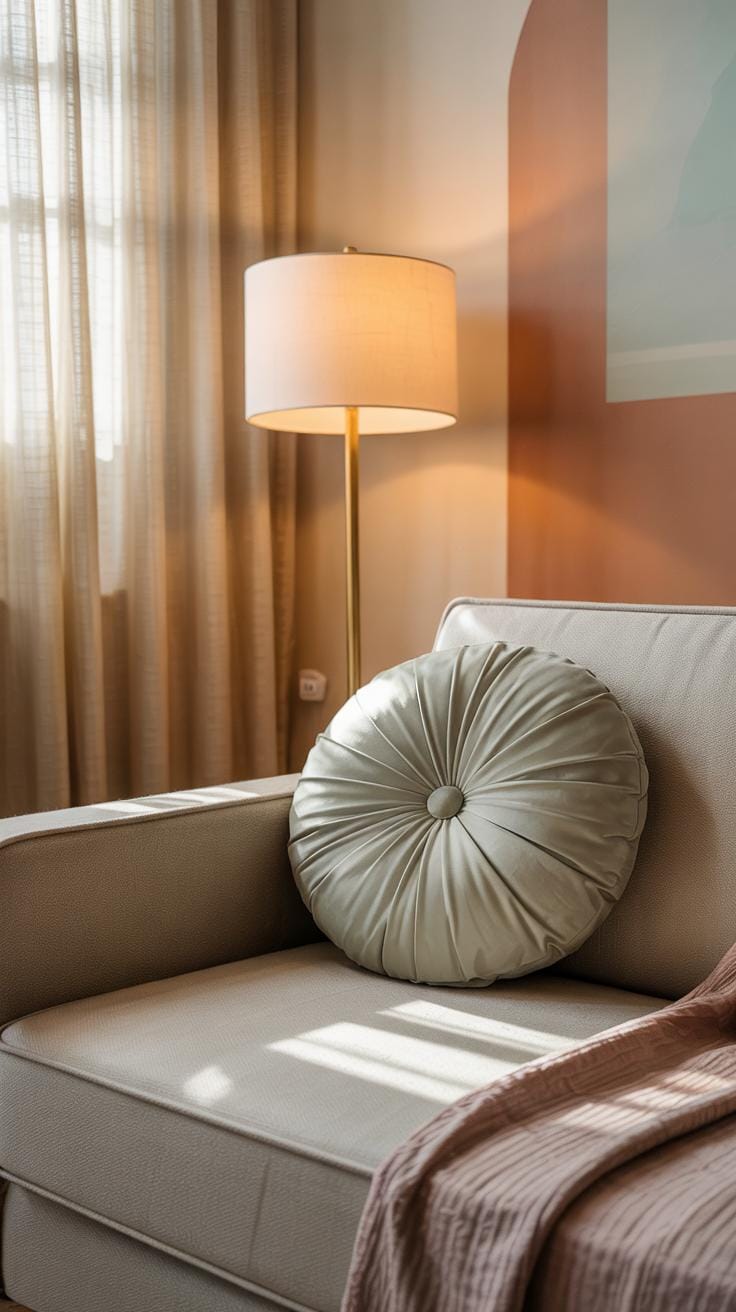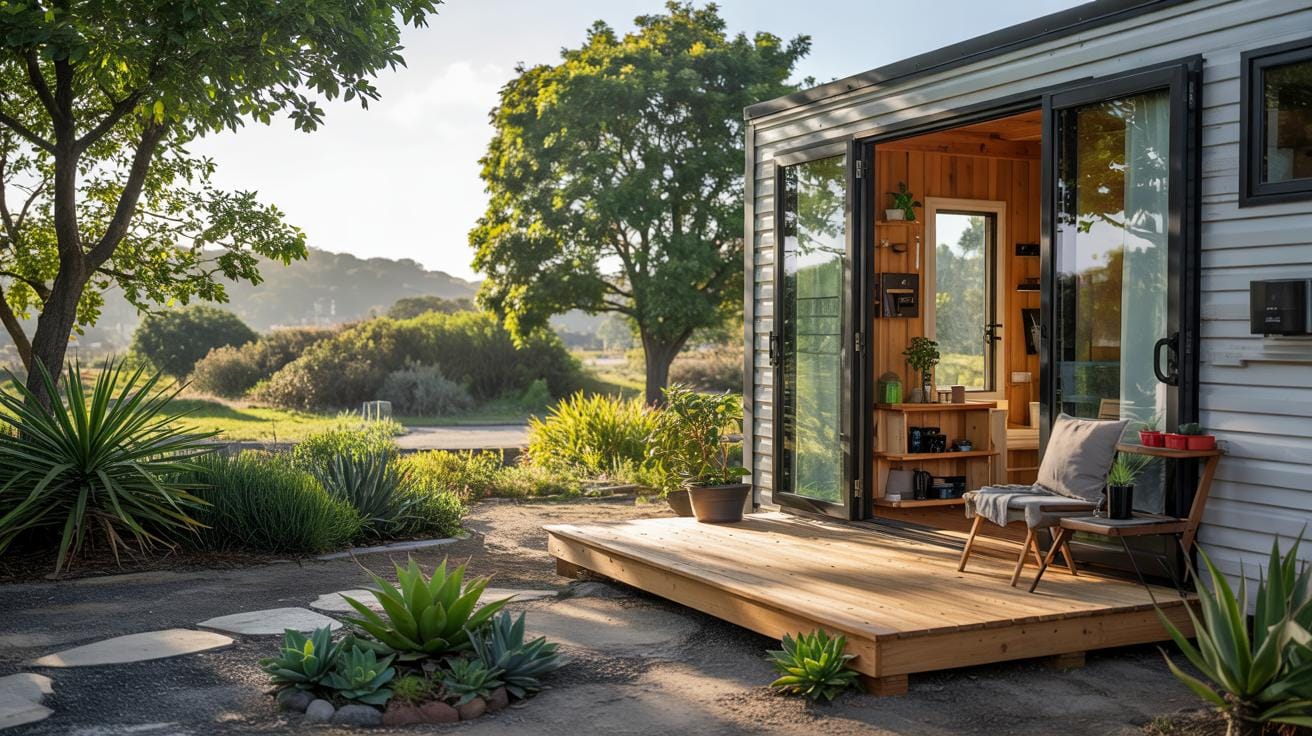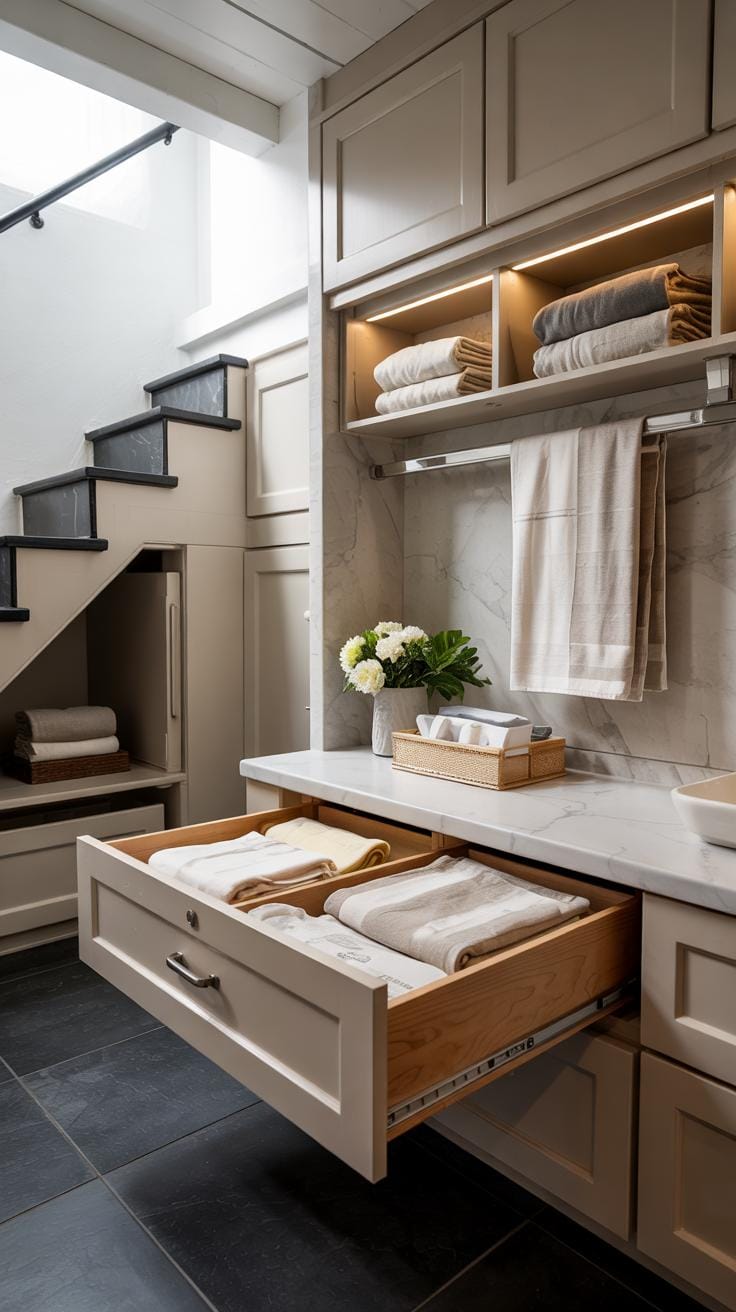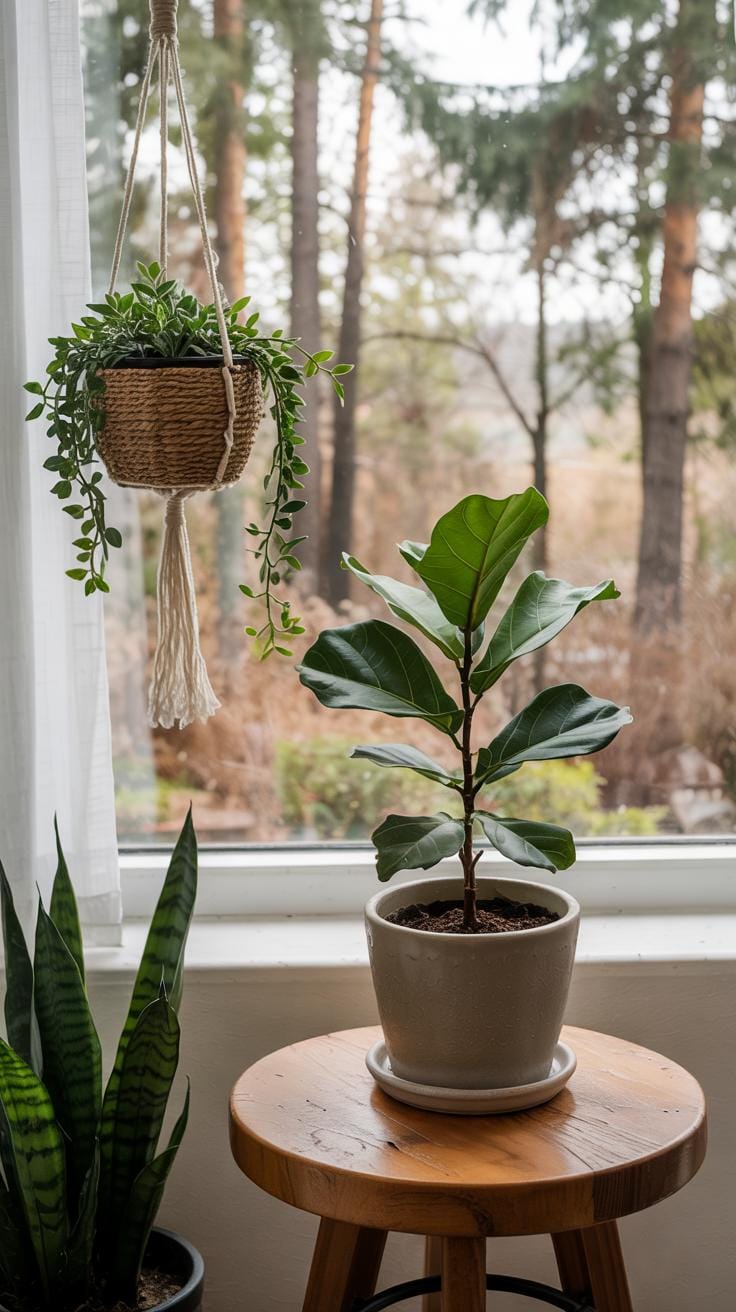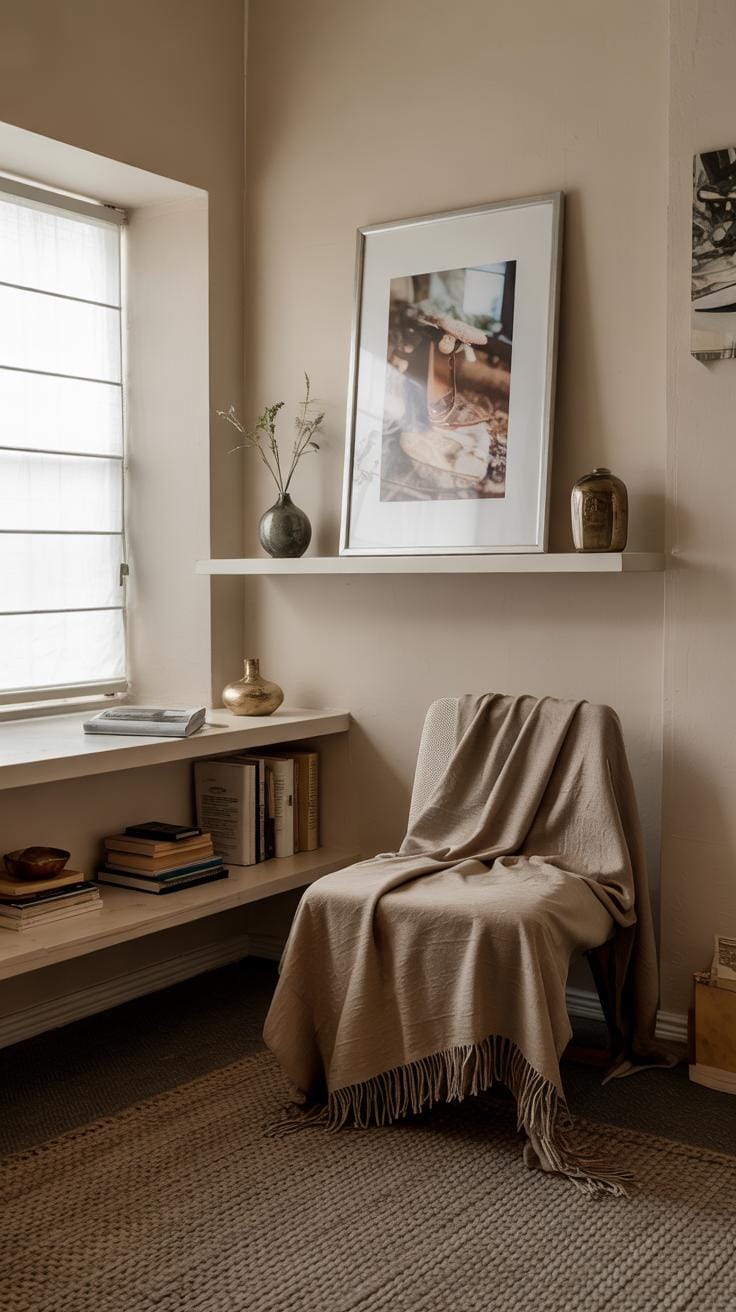Introduction
Living in a tiny house means making the most of every inch of your space. You want an interior that feels open and calm, even when the square footage is small. The minimalist approach helps you achieve a peaceful home by keeping things simple and functional. This article covers smart design ideas for tiny house interiors that promote calm living without clutter or confusion. You will learn how to pick the right furniture, colors, and storage solutions that keep your home easy to live in and enjoy.
Minimalism is about focusing on what truly matters in your space. When you adopt minimalist design principles inside your tiny house, it becomes easier to relax and find order. You will explore ways to combine style with practicality so your tiny home supports your daily life and your peace of mind. Think about how your tiny house can become a place where you spend quality time, work efficiently, and rest well, all through thoughtful design choices.
Understanding Tiny House Living
Definition and Purpose of Tiny Houses
Tiny houses usually measure between 100 and 400 square feet. A home fits this category if it prioritizes compact, efficient use of space. Many people choose tiny house living to lower their living expenses. You spend less on utilities, maintenance, and property taxes. The environmental impact shrinks, too, since smaller spaces use fewer resources. Some embrace tiny houses to simplify life and focus on what truly matters. Economic freedom, a desire to reduce clutter, or the ability to relocate easily can motivate people. Have you thought about what size feels comfortable for your daily life? Tiny houses prove that less space does not mean less comfort or functionality.
Common Challenges in Tiny House Interiors
Limited square footage creates real challenges when designing your tiny home interior. Storage often becomes the biggest problem. Finding enough room for essentials without overcrowding the space requires careful planning. Many tiny houses struggle with space limitations that hinder furniture placement or privacy. Legal zoning and building codes can limit where you can park or build your tiny house. Sometimes, local regulations mandate minimum sizes or require special permits. Would you be ready to adapt to these rules? Knowing these issues helps you create a tiny house that works well for your lifestyle and meets local requirements. Smart storage solutions and multi-use furniture become crucial in overcoming these challenges.
Principles of Minimalist Interior Design
Minimalist design focuses on keeping your space simple and practical. Clear surfaces and essential items help create a calm atmosphere in your tiny house. Every piece of furniture should have a purpose, avoiding items that only take up space. Think about how you use each part of your home before adding more things.
Reducing clutter means regularly assessing what you truly need and letting go of what doesn’t add value. You can store items neatly or choose built-ins that hide belongings while staying out of sight. Simple layouts and smart organization prevent your tiny house from feeling crowded.
How would your daily routine change if your environment was free of distractions? By focusing on functionality and simplicity, you make room for relaxation and peace, which fits perfectly with tiny living. Minimalist design encourages you to live with less and enjoy more.
Core Concepts of Minimalism in Interiors
Minimalist interiors use clean lines to make rooms feel open and uncluttered. Straight edges on furniture and decor reduce visual noise. Neutral colors like white, beige, and soft gray create a peaceful tone, helping your mind relax.
Limiting accessories to a few meaningful objects prevents distractions. Open space allows light and air to flow freely, which helps your tiny house feel fresh and inviting. Imagine your home as a blank canvas that supports calmness rather than overwhelming you.
Could you remove one decorative item this week to see if your space feels better? Simple rooms encourage clear thinking and reduce stress. The absence of clutter offers you freedom to enjoy your home rather than feel trapped by it.
Benefits of Minimalism in Small Spaces
When you choose only essential items, your tiny house feels bigger and more organized. Limited belongings create room to move freely without bumping into clutter. This openness actually improves your comfort and daily efficiency.
By clearing out excess things, you reduce visual distractions, making your space calmer and easier to maintain. A tidy environment helps you focus on what matters, whether that’s cooking, working, or relaxing.
What activities would you enjoy more if your space felt tidy all the time? Minimalism cuts down on the stress that often comes with cramped quarters. It allows you to live fully in your small home, appreciating each corner without overwhelm.
Choosing Functional Furniture
Your tiny house needs furniture that does more than just fill space. Each piece should add value and serve multiple purposes. Selecting functional furniture means saving square feet and keeping your home calm and practical.
Look for foldable furniture like chairs and tables that can be tucked away when not in use. Multi-use items such as sofa beds or storage benches help you avoid clutter and make the most of limited space. When furniture combines comfort, storage, and flexibility, you reduce the need for extra pieces.
Think about your daily routines. What furniture do you use constantly? Could that piece also serve another function? Choosing well-designed furniture that adapts to your needs keeps your tiny home feeling open and stress-free.
Multi-Purpose Furniture Items
Some furniture pieces work harder to save you space. A sofa bed offers seating during the day and converts into a bed at night. This kind of dual-purpose furniture lets you host guests without crowding your home.
Fold-down tables attach to walls and free up floor space when folded away. They create an eating area or workspace without permanent bulk. Storage ottomans hide clutter while doubling as seats or footrests. Even a bench with built-in storage can organize your daily essentials.
Could adding multi-purpose furniture in your tiny home simplify your life? These small changes reduce clutter and open pathways for calm living.
Built-in and Custom Solutions
Built-in furniture fits perfectly into small spaces. Custom shelving, benches, or beds use corners and odd spaces that regular furniture cannot. These solutions reduce wasted room and create clean lines in your interior.
Consider built-in desks that fold down from the wall or staircases that include drawers inside each step. Custom pieces offer the chance to match storage needs exactly, without bulky extras that crowd your living area.
Custom design lets you plan every inch to fit your lifestyle. Could you benefit from furniture made just for your space? Maximizing every square foot makes your tiny home more functional and peaceful.
Color Schemes and Lighting for Calmness
Choosing light or neutral colors helps make a tiny house feel larger and more open. Colors like white, beige, soft grey, and muted pastels reduce visual clutter and create a peaceful mood. These shades reflect light better, helping your space appear brighter without adding bulk. Have you noticed how a pale wall instantly feels fresher and less crowded?
Lighting plays a critical role in how you experience your tiny home. Natural light connects you to the outdoors and improves your mood throughout the day. Placing windows near seating or work areas maximizes sunlight where you need it most. When natural light fades, soft, warm artificial lighting can keep the atmosphere calm and inviting without harsh glare.
Consider how your color choices work with your lighting. Light colors enhance brightness, while layered lighting—from overhead lights to task lamps—adds depth. A well-lit, pale-colored room feels spacious and tranquil, helping you relax in your tiny home. What changes can you make to your windows or lamps to brighten your space without adding clutter?
Selecting Soothing Color Palettes
Whites and off-whites brighten rooms and give a clean, airy feeling. Beige shades add warmth without overwhelming your senses. Soft greys bring a modern, calm tone that pairs well with natural wood or plants. Pastel colors like pale blue, blush pink, or mint green offer subtle color without dominating your space.
Use these colors on walls, floors, or furniture to keep your tiny house feeling open. Painting the ceiling in a lighter shade than the walls adds height to the room. You can introduce pastel cushions or rugs to add softness without cluttering visual space. What color can you add today that will make your space feel more peaceful?
Maximizing Natural and Artificial Light
Placing windows across from each other creates natural cross-ventilation and allows more sunlight to fill the room. Skylights are another way to bring light into deeper parts of the house where windows might not fit.
Mirrors reflect light and make rooms feel bigger. Position mirrors opposite windows to double the daylight entering your home. Use simple, frameless mirrors to avoid adding visual bulk.
For artificial light, choose bulbs with warm tones near living and sleeping areas to encourage relaxation. Layer different light sources like ceiling lights, wall sconces, and portable lamps to adjust brightness for different activities. Can you rearrange your lighting to brighten dark corners or make evenings softer and more restful?
Optimizing Storage Solutions
Keeping your tiny house clutter-free means using every inch wisely. Storage must be practical but also easy to reach. Look for spaces that often go unused, such as under furniture or corners. Pull-out drawers or bins under beds can store seasonal clothes or shoes without taking extra room. Wall shelves bring things up off the floor, making your space feel open. Overhead cabinets add storage without crowding walking areas.
Ask yourself what you use every day and what you can store away. Organize belongings in clear containers or labeled baskets for quick access. Choose multi-purpose furniture like benches with hidden compartments. Keeping items visible but neat helps avoid clutter buildup. Think about storage as a system tailored to your habits, not just empty spots to fill. What would make your daily routine smoother? What can you live without? This focus helps create calm and order.
Hidden and Vertical Storage
Hidden storage keeps things out of sight but within reach. Under-bed compartments slide easily and hold bulky items like bedding or gear. Wall shelves use vertical space to hold books, plants, or kitchen supplies. Position shelves high enough to stay clear but low enough to grab items comfortably.
Overhead cabinets use ceiling height to store less-used belongings. Look for shallow cabinets above doors or windows. They keep clutter off counters without shrinking walking space. Consider hooks or pegboards on walls for utensils or tools. Vertical storage frees your floor, making your tiny house feel larger and more peaceful.
Decluttering for Functional Living
Deciding what to keep is key for calm living. Start by sorting items into categories: daily use, occasional use, and rarely used. Keep only what fits those you use regularly. Ask if an item supports your lifestyle or just adds clutter.
Use bins or drawer dividers to group similar items. Store like with like to simplify finding what you need. Let go of extras you haven’t touched in months. When the space feels more open, living becomes less stressful.
What can you let go of today? How does it feel to have fewer things? Creating clear space improves both your mood and your home’s function.
Incorporating Natural Elements
Natural materials and plants bring a calm energy to tiny house interiors. They help create a connection between your living space and the outdoors. Using elements like wood, stone, and greenery can make your home feel peaceful without adding clutter.
You can feel the warmth of wood floors underfoot and enjoy the cool touch of stone surfaces. These materials create texture and interest, inviting you to slow down and appreciate your surroundings. Think about how a simple wood wall panel or a stone backsplash can become a subtle focal point in a small room.
Plants add life and fresh air to confined areas. They also reduce stress and boost mood. When you select the right ones, they need little care but deliver big benefits. What natural elements can you bring into your space today to enhance your sense of calm and comfort?
Using Wood and Stone Finishes
Wood and stone bring real benefits to tiny home interiors. Wood floors feel warm and comfortable underfoot. They age well and add natural color variations that enrich your space. A smooth wooden surface invites touch and offers a grounding effect.
Stone backsplashes protect walls while adding a cool contrast to wood and other surfaces. Their texture adds depth without overwhelming the eye. Both materials require little maintenance when sealed properly and last for years.
You might try a light oak floor with a gray slate backsplash in your kitchen. These natural textures remain timeless and flexible for many design styles. What room could you refresh using wood or stone to bring warmth and interest?
Adding Indoor Plants
Indoor plants improve air quality and enhance mood, ideal for tiny homes where fresh air can feel limited. Choose varieties that thrive in small spaces and need minimal care. Snake plants, pothos, and ZZ plants are great options.
These plants survive low light and need infrequent watering. Place them on shelves, window sills, or hanging planters to save floor space. Their presence brings nature inside and creates a quiet sense of life and growth.
Have you noticed how a few leaves can brighten a room and soften harsh lines? Adding greenery is a simple way to connect with nature and establish calm amidst the compactness of tiny house living.
Creating Defined Zones
Designing a tiny house requires careful planning to create clear zones for sleeping, working, cooking, and relaxing. You want these areas to feel separate but not cramped. Each zone should serve a distinct purpose while fitting naturally into the overall flow.
Focus on using the available space intelligently. For example, position your bed close to a wall or under a loft to save room. Set up a small desk near a window for natural light, encouraging productivity without taking up too much space.
Kitchen areas can stay compact by choosing appliances and storage that tuck neatly away. Your relaxing zone can include a small chair or bench, placed where it doesn’t block pathways. Think about how each area interacts with the others and arrange furniture accordingly to keep your tiny home feeling balanced and calm.
Open Plan with Visual Dividers
In small spaces, visual dividers help create separation without closing off the room. Rugs with different patterns or colors can mark distinct zones. You might place one under a desk and another in the lounging spot to define these areas effortlessly.
Curtains work well to offer privacy, especially around your sleeping space. You can draw them back during the day to maintain openness. Positioning furniture strategically also creates subtle barriers. For instance, a shelf or sofa can act as a boundary between the kitchen and living area without blocking light or sightlines.
These simple techniques allow your tiny house to feel organized and spacious at once.
Flexibility in Space Use
Movable furniture brings versatility to your tiny house. Consider a fold-out desk or a table with wheels that can shift from workspace to dining area. A Murphy bed or sofa bed can free up floor space when not in use, transforming your sleeping zone into a relaxation or work area.
Adjustable layouts help you adapt your space based on daily needs. Could your kitchen island double as a desk? Can your seating open for storage underneath? Thinking about your tiny house as a flexible environment gives you control over how you use every inch.
Ask yourself what zones you need most during different times and arrange your furniture to match those priorities. This approach keeps your home practical while supporting calm and focused living.
Personalizing Your Minimalist Space
You want your tiny house to feel like home without filling it with clutter. Focus on adding personality through subtle, thoughtful choices. Select a small number of items that truly matter to you. Choose objects that bring you joy or reflect your style but avoid overloading surfaces. For example, a single meaningful sculpture or a favorite photo in a simple frame can express your identity. How does that one piece make you feel when you see it every day? Keep storage smart and limit display areas to maintain calm and openness. Your space should speak to who you are without becoming chaotic. This careful approach builds warmth while respecting the minimalist design you’ve created.
Choosing Meaningful Decor
Select decor intentionally. Prioritize quality over quantity by picking a few pieces that hold personal significance. Artwork from a local artist or a handmade item can create a connection to your values and experiences. Try hanging one or two pieces on the wall rather than placing many items on counters. This keeps surfaces clear and makes your chosen decor stand out. Ask yourself, “Does this item add calm or distraction?” Let your decor tell your story quietly. Keeping it minimal allows your tiny house to feel peaceful and uncluttered while showing your unique taste.
Using Textiles and Cozy Touches
Textiles provide a simple way to bring warmth without crowding the space. Choose pillows, throws, and rugs in natural colors and textures. Look for pieces that enhance comfort but stay in harmony with your minimalist palette. For example, a soft wool throw folded neatly on a bench adds softness without mess. A small, neutral rug can define a zone and keep the floor inviting. These items make your tiny house feel lived in and cozy but don’t overwhelm your clean surfaces. Which textures make you feel calm and comfortable? Focus on a few cozy touches that invite rest and peace.
Maintaining Calm Living Long Term
Regular Decluttering Routines
Keeping a tiny house calm starts with regular decluttering. You should set specific times to sort through your belongings, like every month or season. This habit stops clutter from building up and keeps your space feeling open. Ask yourself what items you haven’t used in the past three months and consider giving them away. Giving items a new home not only lightens your space but also frees your mind.
Each item in your tiny house should have a purpose. If something does not add value or joy, it may be time to let it go. Make decluttering part of your cleaning routine instead of a rare, overwhelming task. Smaller, frequent decluttering sessions help you stay connected to your space and keep calm living intact.
Mindful Consumption and Lifestyle
Your buying choices shape the calm in your tiny house. Think carefully before adding new things. Ask yourself, “Do I need this? Does it fit my lifestyle?” This prevents clutter from making its way inside.
Choose quality over quantity. One well-made item can replace several lower-quality ones and save space in the long run. Avoid impulsive purchases that don’t align with minimalist values or your tiny home goals.
Living simply means focusing on experiences or connections rather than objects. Consider how your lifestyle habits support calm living. Can you reduce gifts, reuse more, or share items with others? Small lifestyle changes can keep your home peaceful and easy to manage day after day.
Conclusions
Your tiny house interior can be a sanctuary with the right minimalist approach. Keeping your space clear and practical reduces stress and makes your home feel larger than its size. Choose multi-functional furniture to save space and maintain flexibility. Use light colors and natural materials to create a soothing environment that invites calm. Prioritize smart storage to hide clutter and keep essentials within reach. These simple steps transform your tiny home into a pleasant place to live long term.
Designing a calm tiny house interior means focusing on what adds value and removing distractions. It encourages you to live intentionally and enjoy your small space fully. Minimalism in tiny homes helps balance beauty with utility, showing that less can truly be more. Your tiny house can support a peaceful lifestyle by being thoughtfully organized, visually simple, and comfortable. This approach not only maximizes your limited space but also creates a home where you feel content and focused.

